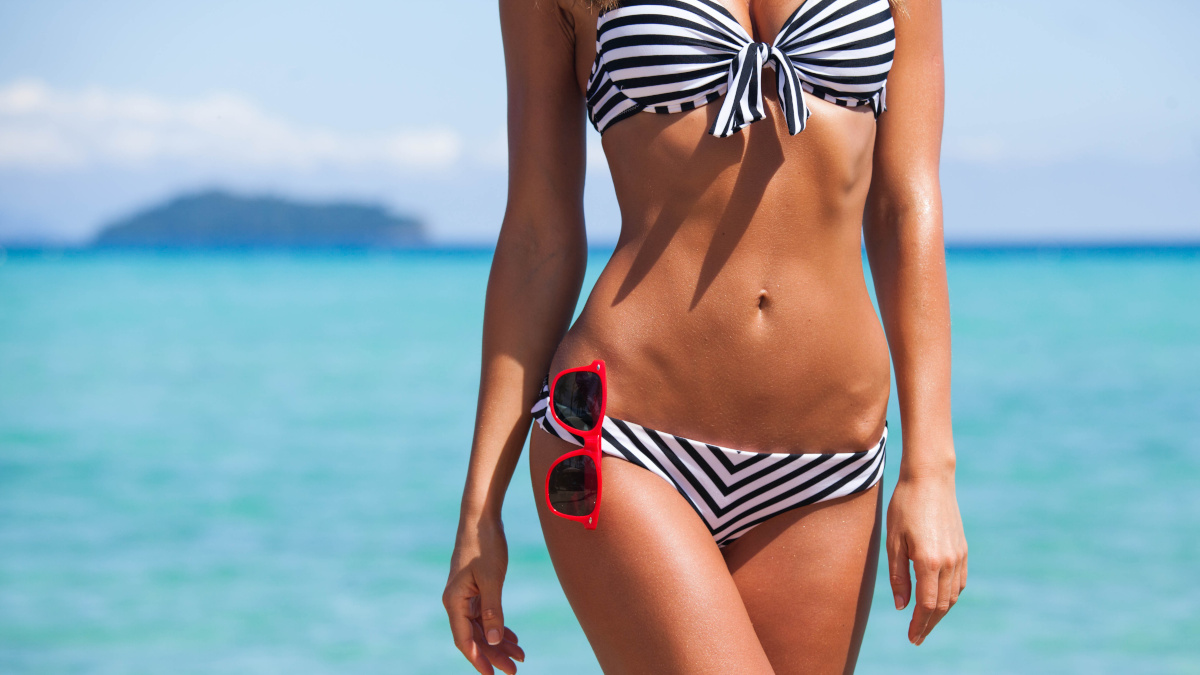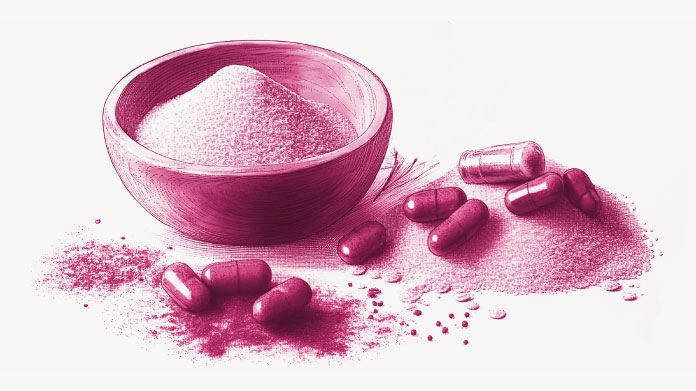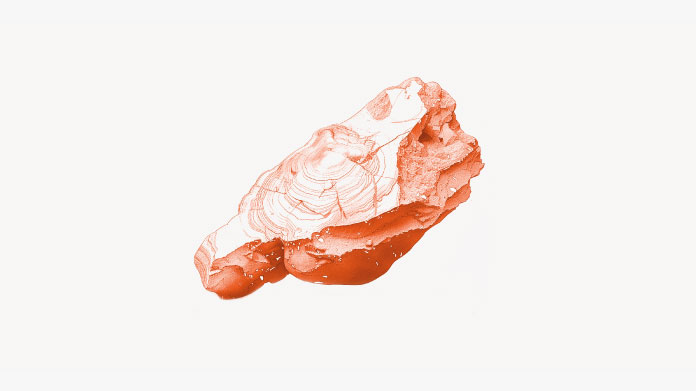Tanning: what’s the best dietary supplement for achieving that sun-kissed look?
Want an attractive golden tan this summer? Discover the key substances for activating or prolonging your suntan.

What to expect from a tanning supplement
Depending on the dose and formulation, tanning supplements have two primary functions: to boost a suntan by ‘prepping’ the skin for exposure to the sun (preparatory capsules), or to color the skin without necessarily requiring UV exposure to do so (self-tanning capsules).
By directly influencing the mechanisms responsible for skin pigmentation, these supplements help to enhance the complexion by producing a gradual, natural, and lasting tan. A genuine ‘just back from holiday’ look!
Take care though: while some manufacturers might suggest otherwise, these tanning supplements do not protect the skin against UV damage such as sunburn. They do not, therefore, provide appropriate sun protection.
Carotenoids: key assets for a healthy, summer glow
What do bright orange carrots, sunshine yellow corn and vibrant red tomatoes have in common? In each case, the radiance they bring to our supermarket shelves comes from their carotenoids, colored pigments involved in photosynthesis. In plants, the role of carotenoids is primarily to harvest light energy from the sun, while at the same time exerting a photoprotective effect (1). There are more than 600 known carotenoids, including beta-carotene, astaxanthin, lycopene, lutein and zeaxanthin.
Consumed regularly, these substances give the skin an attractive golden glow (2). Supplementing with carotenoids (such as the powerful product Carottol, which combines alpha-carotene, beta-carotene, lutein, zeaxanthin, lycopene and astaxanthin) will thus help to restore color to your skin.
Two other plant-based foods that help prep the skin for tanning
To prepare for and stimulate the tanning process, add grapefruit to your shopping list, its pinky-red flesh reflecting the fruit’s lycopene content. It’s also popular for its skin-purifying and skin-regenerating properties. Positive effects on individual sensitivity to UV have been observed from a combination of grapefruit and rosemary (3).
While it does not in itself initiate tanning, borage is great for preparing dry skin for the sun, mainly because of the richness of its oil in omega-6 fatty acids (4).
Vitamin C to combat photoaging
Though UV rays might bring a welcome golden shimmer to our skin, they also generate free radicals which damage cell integrity. Over time, this manifests in the skin as the much-dreaded signs of photoaging like liver (aging) spots and wrinkles (5).
In helping to protect cells against oxidative stress and maintain normal skin, vitamin C acts like a a natural parasol (6). An excellent reason to load up your shopping trolley with citrus fruit, peppers, kiwi fruit and broccoli in the months before you head off to the sun-lounger!
And to supercharge your intake, it’s worth considering supplementing with vitamin C (protected from gastric juices by a phospholipid layer, the vitamin C in the supplement Liposomal Vitamin C offers optimal uptake).
The best tanning supplement: keratin hydrolysate, rich in melanin
If you want to accelerate or intensify your tan, choose keratin hydrolysate, the most effective tanning supplement around. Obtained from black sheep wool, this complex combines exceptional nutrients with tanning precursors (7). It’s notable for its high content of melanin, the pigment responsible for skin color.
As you know, melanin, ultraviolet rays and tanning are all intrinsically linked. In deeply penetrating the dermis, UVA rays activate the melanin already present in the skin, producing an immediate tanning effect. Meanwhile, a small amount of UVB rays cross the epidermal barrier, stimulating the production of new melanin by melanocytes, and this produces a subsequent tanning effect (which generally appears 24 to 72 hours after exposure) (8).
A number of studies have highlighted keratin hydrolysate’s efficacy in relation to both immediate and subsequent pigmentation, and it thus helps you achieve a deeper, longer-lasting tan with each exposure to the sun. To get the most out of your sunbathing sessions, try taking supplements that contain keratin hydrolysate (such as Tan-Aid, based on the patented ingredient Melaline®, supported by several clinical studies).
Good habits for risk-free tanning
As we’ve said, tanning accelerators are not designed to protect your skin from the sun. So if you want to go brown safely (without peeling or burning), adopt the following common-sense measures:
- avoid the sun between 11am and 4pm, the ‘window’ in which solar radiation (called the ‘UV index’) reaches its peak;
- apply sun protection every two hours, using the right UV index (or SPF) for the sun’s intensity and your skin type. An SPF of between 30 and 50 is strongly recommended for those with fair or sensitive skin (9);
- don’t abandon the sunscreen once your skin’s gone brown: even when tanned, your skin will not filter out stealthy UVA rays effectively. Even if they don’t cause sunburn or other visible damage, they can still adversely and irreversibly affect cellular DNA (10);
- after a sunbathing session, re-hydrate your skin with a moisturising cream or nourishing plant oil (argan, shea, jojoba, carrot ...) to soothe and deeply regenerate the skin.
References
- Stahl W, Sies H. β-Carotene and other carotenoids in protection from sunlight. Am J Clin Nutr. 2012 Nov;96(5):1179S-84S. doi: 10.3945/ajcn.112.034819. Epub 2012 Oct 10. PMID: 23053552.
- Meléndez-Martínez, Antonio J et al. “Skin Carotenoids in Public Health and Nutricosmetics: The Emerging Roles and Applications of the UV Radiation-Absorbing Colourless Carotenoids Phytoene and Phytofluene.” Nutrients vol. 11,5 1093. 16 May. 2019, doi:10.3390/nu11051093
- Nobile, Vincenzo et al. “Skin photoprotective and antiageing effects of a combination of rosemary (Rosmarinus officinalis) and grapefruit (Citrus paradisi) polyphenols.” Food & nutrition research vol. 60 31871. 1 Jul. 2016, doi:10.3402/fnr.v60.31871
- Seo SA, Park B, Hwang E, Park SY, Yi TH. Borago officinalis L. attenuates UVB-induced skin photodamage via regulation of AP-1 and Nrf2/ARE pathway in normal human dermal fibroblasts and promotion of collagen synthesis in hairless mice. Exp Gerontol. 2018 Jul 1;107:178-186. doi: 10.1016/j.exger.2018.02.017. Epub 2018 Feb 27. PMID: 29499374.
- Flament F, Bazin R, Laquieze S, Rubert V, Simonpietri E, Piot B. Effect of the sun on visible clinical signs of aging in Caucasian skin. Clin Cosmet Investig Dermatol. 2013;6:221-232. Published 2013 Sep 27. doi:10.2147/CCID.S44686
- Pullar JM, Carr AC, Vissers MCM. The Roles of Vitamin C in Skin Health. Nutrients. 2017;9(8):866. Published 2017 Aug 12. doi:10.3390/nu9080866
- Mokrejs P, Hutta M, Pavlackova J, Egner P, Benicek L. The cosmetic and dermatological potential of keratin hydrolysate. J Cosmet Dermatol. 2017 Dec;16(4):e21-e27. doi: 10.1111/jocd.12319. Epub 2017 Feb 6. PMID: 28164425.
- Wolber R, Schlenz K, Wakamatsu K, et al. Pigmentation effects of solar-simulated radiation as compared with UVA and UVB radiation. Pigment Cell Melanoma Res. 2008;21(4):487-491. doi:10.1111/j.1755-148X.2008.00470.x
- Gabros S, Nessel TA, Zito PM. Sunscreens And Photoprotection. [Updated 2021 Nov 15]. In: StatPearls [Internet]. Treasure Island (FL): StatPearls Publishing; 2022 Jan-. Available from: https://www.ncbi.nlm.nih.gov/books/NBK537164/
- Rünger TM. Role of UVA in the pathogenesis of melanoma and non-melanoma skin cancer. A short review. Photodermatol Photoimmunol Photomed. 1999 Dec;15(6):212-6. doi: 10.1111/j.1600-0781.1999.tb00090.x. PMID: 10599968.
13 Days
A Product worth waiting for when not…
A Product worth waiting for when not available and then arriving as a surprise!
DOMINIC
15 Days
On time shipping
On time shipping
GEORGE Verne
17 Days
Ordering was easy and the product was…
Ordering was easy and the product was delivered with no problems. Appreciated that I was notified when it would arrive. Thanks!
MascarC
22 Days
Great customer service - responsive …
I ordered from them and my item was unavailable for sometime. I was super happy when they reactivated my order and shipped my item which arrived very quickly. Great customer service.
Ruth Rueter
23 Days
Super fast shipping
Super fast shipping
Donald Borling
26 Days
Reputable companysearch and the number of…
The research and the number of selection of products.
NAKHJAVAN Shervin
39 Days
The Anti Aromatase is a great product
The Anti Aromatase is a great product. You just need to have constant inventory. Recently this product has been out of stock.
GEORGE Verne
41 Days
Great help on chat
Great help on chat. Knowledgeable and friendly.
Jason Argos
44 Days
Customer service was fast and friendly.
Customer service helped to stop the transaction process of the subscription. I appreciated that.
Greenie
45 Days
I order here due to the high quality of…
I order here due to the high quality of the products and the quick delivery of items - thank you
Barbara J
46 Days
SuperSmart's Eye Pressure supplements: highly recommended!
I purchase SuperSmart's Eye Pressure supplements regularly for over 5 years, and gotta say they are truly a wonderful product for my Glaucoma. Highly recommended if you have eye pain from your Glaucoma.
D. Martinez
50 Days
Quick service
Quick service
MONELL
51 Days
Speedy service.
Speedy service.
ROSENTHAL Marvin
55 Days
Clear website- Efficient
Clear website. Excellent search engine and fast delivery!
Mohamad Hussein
57 Days
They have great products.
They have great products.
Vickie



